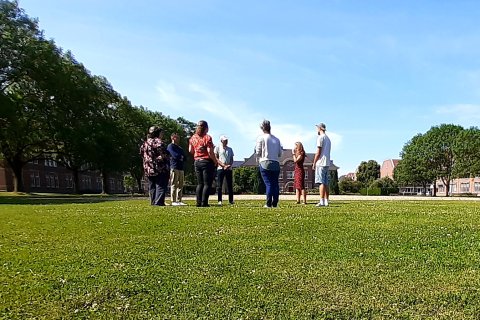Outdoor Learning Space

From teachers and students the question arose to design green learning environments. Future Learning Spaces took up this request and organised a workshop on outdoor (educational) activities. In which teachers, students and staff participated enthusiastically.
During the brainstorming session, participants formulated as many reasons for education outside as possible. Participants then clustered these reasons into the themes below:
- Health benefits, both physical and mental
- Stimulates creativity
- Flexibility
- Integration of education in environment
- Stimulates conversation
- More room for certain forms of work
- Relaxing
- No hierarchy between teacher and students, informal atmosphere
- Forced to use analogous work forms
- Inclusive
- Reduces shortage of teaching spaces
Intended result
Based on the literature, we want to set up a concept with several separate elements that together form a route. Starting points are that these elements invite to active (learning) activities, are accessible and can be used by students, teachers and staff alike. The facilities lend themselves to both formal and informal education. At the same time, the elements also invite the general public to use and interact.

Where does the project currently stand?
We have sought collaboration with the Botanical Gardens and are exploring opportunities to further develop the Outdoor Learning Space together. The plan is to develop ideas further, together with teachers, students and the Botanical Gardens.
